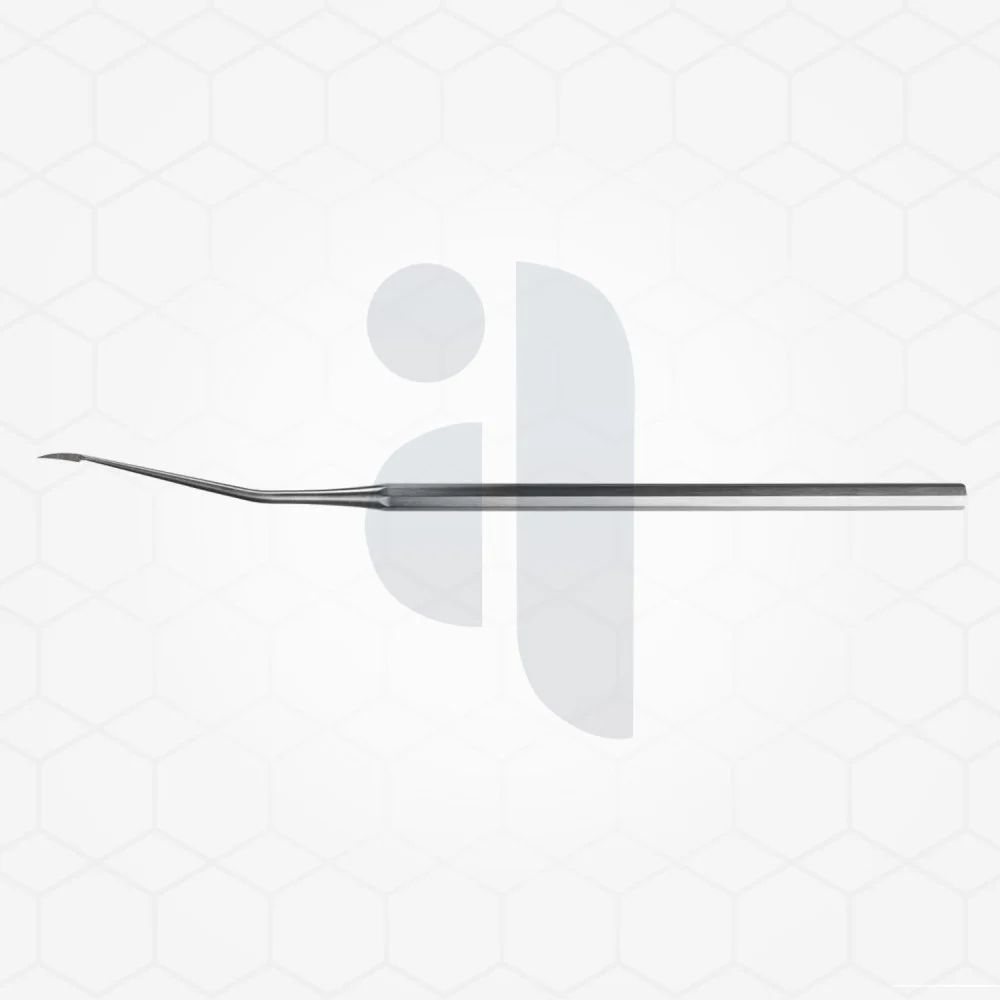Surgical instruments play a pivotal role in healthcare, enabling precision and proficiency in medical procedures. Among these instruments, the sickle knife stands out as a specialised tool vital for a variety of delicate surgical operations. Renowned for its unique shape and versatility, the sickle knife offers unparalleled utility, especially in intricate procedures.

What Is a Sickle Knife?
The sickle knife is a surgical instrument distinguished by its curved, sickle-shaped blade. This distinctive design allows surgeons to perform precise incisions and manoeuvres in confined or delicate operative fields. The blade is typically crafted from high-grade stainless steel or other durable, sterile materials, ensuring accuracy and hygienic performance.
The handle of the knife handle is ergonomically designed, giving surgeons a solid, comfortable grip for better control during operations. These features make the instrument highly adaptable to various procedures requiring precision.
Common Uses of the Sickle Knife
The sickle knife is used across a broad range of medical disciplines, particularly in surgeries requiring delicate tissue dissection or incisions in small areas. Its primary applications include procedures in ophthalmology, otorhinolaryngology (ENT), and dermatology.
One prominent use of the sickle knife is during ophthalmic surgeries, where fine, controlled cuts around sensitive tissues like the eye are paramount. Its design makes it possible to safely remove or access diseased tissues without risking damage to nearby structures. Likewise, in ENT surgeries, it is used to precisely work around the nasal cavity or ear canal, where high levels of delicacy and accuracy are crucial.
Dermatologists also rely on this instrument, especially for procedures involving skin grafts or precise excision of lesions. Additionally, the sickle knife is widely favoured during microsurgeries, where working in confined spaces requires tools specifically engineered for such precision.
Benefits of the Sickle Knife in Surgical Practice
The sickle knife is indispensable in modern surgical toolkits due to its precise craftsmanship and unparalleled utility. One of the greatest advantages of this tool is its ability to provide clean, controlled cuts, which reduce the likelihood of trauma to the surrounding tissues. This functionality directly impacts patient recovery times, as clean incisions promote better wound healing with fewer complications.
Beyond precision, the blade's curved design allows surgeons to execute intricate moves efficiently, even in hard-to-reach areas where traditional straight-bladed instruments might fall short. For example, during ophthalmic or nasal surgeries, the sickle knife’s contour ensures maximum accessibility with minimal invasive contact to other tissues.
The ergonomic design of the handle further enhances the surgeon’s control, ultimately contributing to greater procedural outcomes. Since surgeries involving intricate tissue dissection require unwavering focus and steadiness, such ergonomic nuances offer significant benefits in terms of accuracy and fatigue reduction for medical professionals.
The Importance of the Sickle Knife in Modern Medicine
The sickle knife represents a marriage between innovation and purpose, addressing the intricate needs of modern surgical techniques. Its precision lends itself to safer surgeries, while its versatility ensures that it can be adapted to various medical specialities. This adaptability has made it a go-to instrument for any surgical procedure necessitating refined control.
In an era where medical technology continues to evolve, instruments like the sickle knife remain pivotal in delivering high standards of patient care. Surgeons rely on its ability to minimise operative risks by limiting unnecessary damage to fragile tissues. This precision not only enables complex surgeries but also enhances patient outcomes, leading to higher rates of satisfaction and recovery.
Why the Sickle Knife Matters in Surgical Suites
The sickle knife is not just a tool; it is an extension of a surgeon’s skill and expertise. With its functional efficiency and adaptability, it empowers medical professionals to perform surgeries with heightened accuracy, especially in scenarios requiring the utmost care. Patient safety and success have become integral to the ethos of modern medicine, and the presence of specialised tools like the sickle knife ensures these values are upheld.
From subtle refinements to groundbreaking procedures, the sickle knife embodies the innovation and precision demanded by today’s medical challenges. By integrating highly specialised, purpose-built instruments into surgical suites, healthcare providers continue to redefine the boundaries of what is possible in modern surgery.
Final Thoughts
The sickle knife surgical instrument exemplifies the evolution of precision tools in medicine. Its distinctive design, adaptability across numerous surgical disciplines, and contributions to improved patient outcomes underscore its importance in today’s healthcare environment. Whether used in ophthalmology, ENT, dermatology, or microsurgery, this tool demonstrates how purpose-driven technology can revolutionise medical practices and enhance lives. For medical professionals, the sickle knife is not merely an instrument; it is an essential ally in the pursuit of surgical excellence.
Comments on “Understanding the Role of the Sickle Knife Surgical Instrument in Modern Medicine”